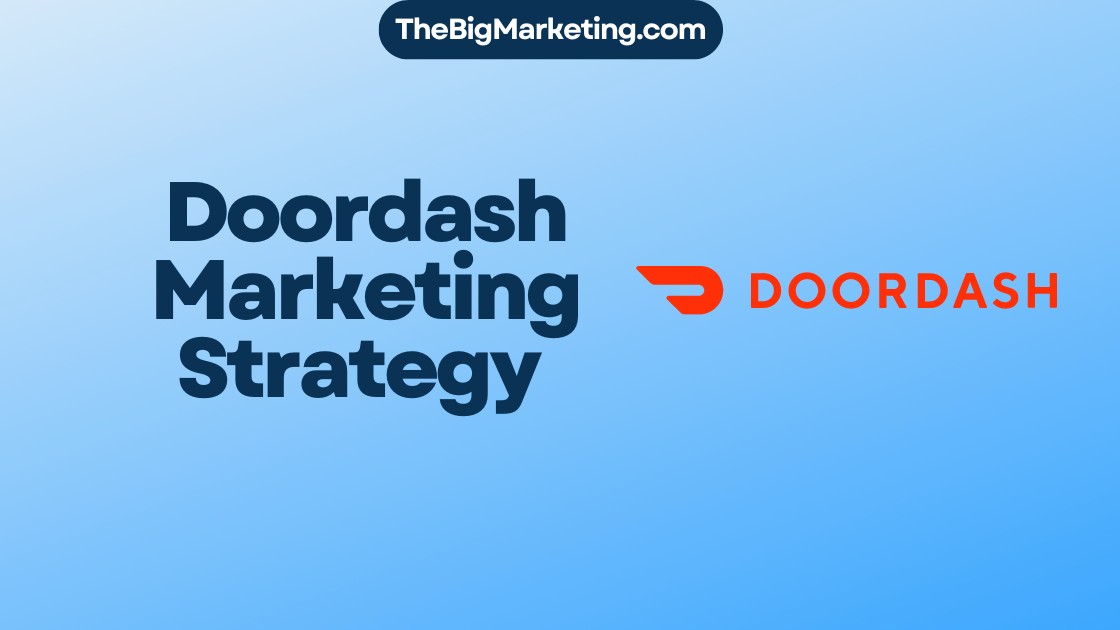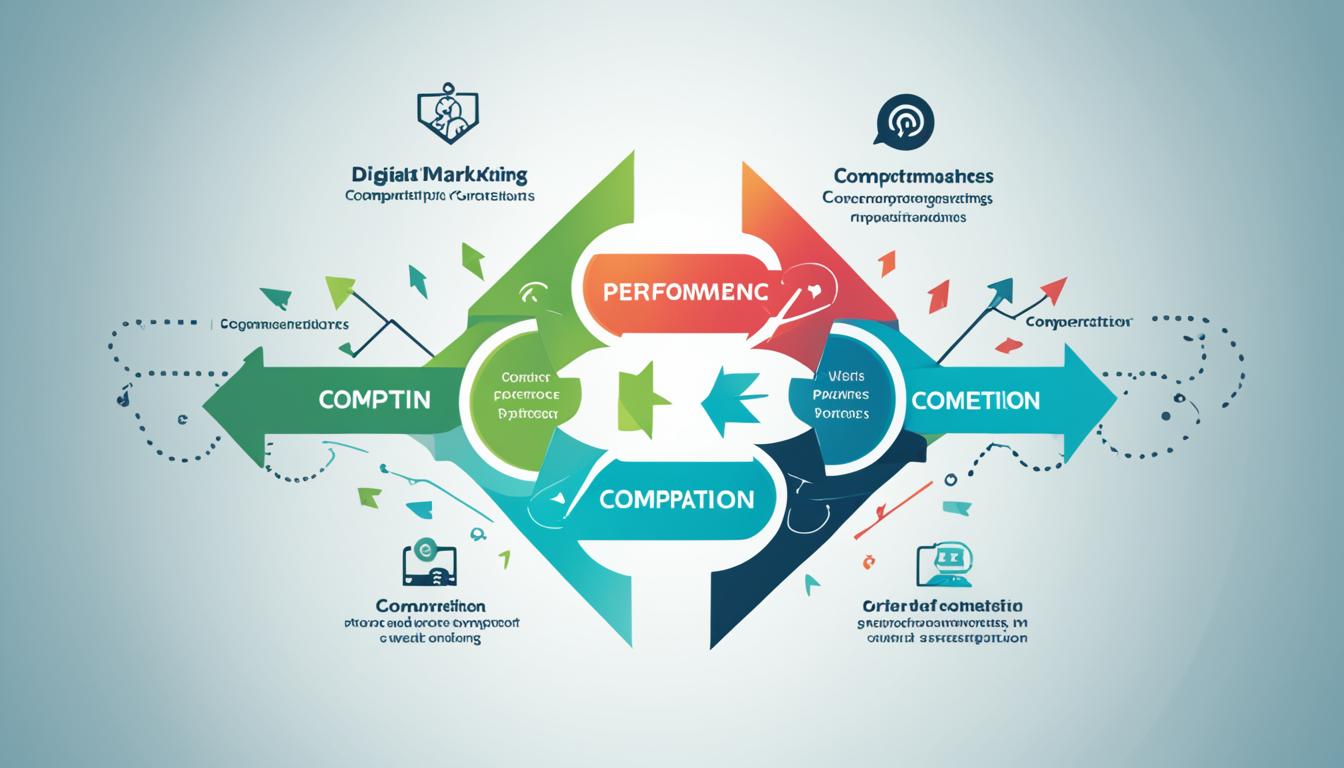In today’s competitive business landscape, effective marketing strategies are crucial for success. Two key approaches that businesses employ are solutions marketing and product marketing. While both aim to drive customer engagement and business growth, they take different approaches to achieve these goals.
Solutions marketing focuses on providing comprehensive solutions to customer problems. It takes a customer-centric approach, identifying and addressing specific pain points and challenges. On the other hand, product marketing focuses on promoting and positioning specific products and services, highlighting their features and benefits.
In this guide, we will explore the key differences between solutions marketing and product marketing, their impact on marketing strategies, and how they contribute to customer engagement and business growth.
Key Takeaways:
- Solutions marketing focuses on providing comprehensive solutions to customer problems.
- Product marketing promotes and positions specific products and services by highlighting their features and benefits.
- Solutions marketing takes a customer-centric approach, while product marketing focuses on the product itself.
- Both marketing approaches contribute to customer engagement and business growth.
- Businesses can benefit from combining solutions marketing and product marketing strategies to meet customer needs effectively.
What is Solutions Marketing?
Solutions marketing is a hybrid of product marketing and traditional marketing that focuses on providing solutions to customer problems and meeting specific business challenges. Unlike product marketing, which primarily promotes specific products and services, solutions marketing takes a broader perspective by addressing a wide range of customer needs and pain points.
By leveraging many of the same practices as product marketing, solutions marketing aims to deliver comprehensive solutions that resonate with customers and address their unique challenges. It takes into consideration various business use cases and tailors marketing strategies to meet specific customer needs.
Key Features of Solutions Marketing
- Focuses on customer problems and pain points
- Addresses a broad range of business challenges and use cases
- Prioritizes comprehensive solutions over specific products or services
- Utilizes customer-centric marketing strategies
- Emphasizes the value and benefits of the solution
By adopting a solutions marketing approach, businesses can effectively position themselves as problem solvers and establish a strong connection with their target audience. This strategy allows companies to showcase their expertise in addressing customer challenges and differentiate themselves from competitors.
Image: Solutions marketing helps businesses provide comprehensive solutions to customer problems and meet specific business challenges.
What is Product Marketing?
Product marketing plays a vital role in promoting and positioning specific products and services offered by a company. It focuses on showcasing the features, benefits, and unique selling points of a specific product to attract customers and drive sales. Unlike solutions marketing, which takes a broader perspective on customer challenges and business use cases, product marketing revolves around a particular product and its attributes.
Benefits of Product Marketing
Product marketing offers several advantages for businesses:
- Increased visibility and awareness: By effectively highlighting the attributes and benefits of a specific product, product marketing helps increase the visibility and awareness of the offering among the target audience.
- Enhanced customer engagement: Product marketing enables businesses to engage customers by showcasing how a specific product fulfills their needs and solves their problems.
- Improved sales and revenue: Through targeted product-centric marketing strategies, businesses can attract more customers and drive sales, ultimately leading to increased revenue.
Successful product marketing requires a deep understanding of the target audience, market trends, and competitive landscape. It involves creating persuasive messaging, developing compelling content, and implementing effective marketing tactics to position the product as the optimal solution for customer needs. Furthermore, product marketers collaborate closely with other teams such as product management and sales to develop customer-centric strategies that drive business growth.
To illustrate how product marketing works in practice, let’s take a look at an example:
| Example: XYZ Electronics – Product Marketing for the Latest Smartphone | |
|---|---|
|
In this example, XYZ Electronics employs product marketing techniques to promote their latest smartphone, the XYZ SuperPhone. The marketing strategy is centered around highlighting the product’s key features and unique selling points that resonate with the target audience. By leveraging digital platforms and crafting compelling messaging, XYZ Electronics aims to capture the attention of tech-savvy individuals, professionals, and smartphone enthusiasts, ultimately driving sales and revenue growth.
Marketing-Driven vs Product-Driven
The distinction between a marketing-driven company and a product-driven company lies in their approach to business strategies. A marketing-driven company places a strong emphasis on understanding and fulfilling customer needs and wants. This type of company focuses on developing solutions that address customer problems and challenges.
Conversely, a product-driven company centers its strategy around the product itself. It places a primary focus on creating new products and features, often driven by internal product development goals and innovation efforts. While customer needs are still considered, the primary objective is product-centric.
Hybrid companies often find a balance between these two approaches, leveraging both solutions and product marketing strategies to meet customer demands. These companies understand the importance of customer-centric strategies while also recognizing the value of product-centric strategies in driving business growth and innovation.
By combining marketing-driven and product-driven approaches, companies can effectively align their strategies with customer needs and market demands, ultimately leading to enhanced customer satisfaction and business success.
Tips for Success in Solutions Marketing and Product Marketing
To succeed in solutions marketing and product marketing, there are several key tips to keep in mind. By following these strategies, you can effectively engage customers and drive business growth.
1. Understand the Product Roadmap
Both solutions marketing and product marketing professionals should have a deep understanding of the product roadmap. This knowledge enables them to align their marketing efforts with upcoming product releases and effectively communicate the value of new features and capabilities to customers.
2. Possess Strong Translation Skills
Product marketers should possess strong translation skills to effectively communicate the product’s capabilities in a way that resonates with customers. They must be able to translate technical jargon into clear and compelling language, ensuring customers understand how the product addresses their specific challenges and needs.
3. Tailor Content Creation to Address Customer Challenges
In solutions marketing, content creation plays a crucial role in addressing customer challenges. By developing informative and relevant content, solutions marketers can position their offerings as comprehensive solutions to customer problems. This content should provide actionable insights and practical guidance to help customers overcome their specific challenges.
4. Highlight Unique Features and Capabilities
In product marketing, the focus is on highlighting the unique features and capabilities of a product. Product marketers should craft compelling messaging that emphasizes the benefits and advantages of their offerings. By effectively articulating the product’s value proposition, product marketers can differentiate it from competitors and attract customer interest.
Comparison of Solutions Marketing and Product Marketing
| Aspect | Solutions Marketing | Product Marketing |
|---|---|---|
| Focus | Addressing customer challenges and providing comprehensive solutions | Promoting specific product features and capabilities |
| Content | Informative and relevant content tailored to customer challenges | Highlighting unique features and benefits of the product |
| Communication | Translating technical language into customer-friendly messaging | Crafting compelling messaging to differentiate the product |
GitLab Case Study: Product and Solution Marketing
GitLab, a leading DevOps platform, exemplifies the effective integration of product and solution marketing to drive success. The company’s product and solution marketing teams collaborate closely to develop positioning and messaging strategies that effectively communicate the value of GitLab’s platform and solutions to their target audience.
In order to inform their go-to-market and product strategies, GitLab conducts comprehensive market and competitive intelligence. This involves gathering data and insights on market trends, customer needs, and competitor activities. By staying informed about the competitive landscape, GitLab can identify opportunities for differentiation and ensure their offerings meet the evolving demands of their customers.
The product and solution marketing teams at GitLab also recognize the pivotal role of customer advocacy in building credibility and trust. They focus on recruiting and activating customer advocates who can share their positive experiences and success stories. These customer advocates serve as brand ambassadors, amplifying GitLab’s messaging and demonstrating the value of the platform to potential customers.
To summarize:
- The product and solution marketing teams at GitLab collaborate to develop positioning and messaging that effectively communicates the value of their platform and solutions.
- Market and competitive intelligence inform GitLab’s go-to-market and product strategies.
- Customer advocates play a crucial role in demonstrating momentum and trust in the market.
By leveraging the power of product and solution marketing, GitLab has been able to establish a strong market presence and drive business growth in the competitive landscape of DevOps platforms.
| Benefits of GitLab’s Approach | Impact |
|---|---|
| Clear positioning and messaging | Increased brand awareness and customer engagement |
| Informed go-to-market and product strategies | Improved product-market fit and customer satisfaction |
| Customer advocacy and trust-building | Enhanced credibility and market differentiation |
Steps to Develop a Product Marketing Strategy
Developing an effective product marketing strategy is crucial for businesses to effectively position and promote their products in the market. This section will outline the key steps involved in developing a successful product marketing strategy, including market analysis, defining the target audience, creating buyer personas, developing positioning and messaging, and determining the pricing strategy.
1. Market Analysis
Market analysis is a vital step in developing a product marketing strategy. It helps businesses gain a deep understanding of the competitive landscape, identify market trends, and uncover opportunities for differentiation. Conducting thorough market research allows businesses to assess market size, customer needs and preferences, and competitor strategies. This analysis provides valuable insights that inform the subsequent steps of the product marketing strategy.
2. Defining the Target Audience
After conducting market analysis, businesses need to define their target audience. This involves identifying the specific group of customers who are most likely to benefit from and purchase the product. By understanding the target audience’s demographics, pain points, and motivations, businesses can tailor their marketing efforts to effectively reach and engage potential customers. The target audience will serve as the foundation for creating buyer personas and developing targeted messaging.
3. Creating Buyer Personas
Buyer personas are detailed profiles that represent the target audience segments. They help businesses understand the characteristics, needs, and preferences of their ideal customers. By creating buyer personas, businesses can develop marketing messages that resonate with the specific pain points and goals of each segment. This ensures that the product marketing strategy effectively addresses the target audience’s needs and speaks directly to their motivations.
4. Developing Positioning and Messaging
The next step in developing a product marketing strategy is defining the product’s positioning and messaging. Positioning refers to how the product is positioned in the market in relation to competitors. It highlights the unique value and benefits that differentiate the product from others. Messaging, on the other hand, involves crafting compelling and concise messages that effectively communicate the product’s value proposition to the target audience. The positioning and messaging should be consistent across all marketing channels and materials, ensuring a cohesive and compelling brand message.
5. Determining the Pricing Strategy
Choosing an appropriate pricing strategy is a critical element of the product marketing strategy. The pricing strategy should align with the value that the target audience perceives in the product, while also considering the competitive landscape. Businesses can opt for competitive pricing, setting prices in line with competitors, or adopt a value-based pricing approach, reflecting the perceived value of the product to the target audience. The pricing strategy should take into account market demand, production costs, and profit goals to ensure the product is priced strategically.
By following these key steps, businesses can develop a comprehensive product marketing strategy that effectively positions their product in the market, resonates with the target audience, and drives success. The table below provides a summary of the steps involved in developing a product marketing strategy:
| Steps | Description |
|---|---|
| 1 | Market Analysis |
| 2 | Defining the Target Audience |
| 3 | Creating Buyer Personas |
| 4 | Developing Positioning and Messaging |
| 5 | Determining the Pricing Strategy |
Importance of Market Research and Competitive Analysis
Market research and competitive analysis are essential components of a successful marketing strategy. By understanding customer needs and preferences and analyzing competitor strengths and weaknesses, businesses can make informed decisions and create effective marketing campaigns that resonate with their target audience.
Market Research
Market research provides valuable insights into customer needs, desires, and pain points. Through surveys, interviews, and data analysis, businesses can gather information about their target audience, including demographics, interests, and buying behaviors. This research helps companies develop a customer-centric approach and tailor their products or services to meet customer demands.
Market research also enables businesses to validate product ideas and identify market gaps or trends. By understanding customer preferences and market dynamics, companies can launch new products or modify existing ones to better align with customer needs.
Competitive Analysis
Competitive analysis involves evaluating and comparing a business’s strengths and weaknesses against its competitors. By studying competitor strategies, positioning, and marketing tactics, businesses can identify opportunities for differentiation and improvement.
Competitive analysis helps businesses understand their competitors’ products, pricing, branding, and customer experiences. This information allows companies to identify areas where they can outperform competitors and better meet customer needs. It also helps businesses identify gaps in the market that they can leverage to gain a competitive advantage.
The Benefits of Market Research and Competitive Analysis
Market research and competitive analysis offer several benefits to businesses:
- Identifying customer needs and preferences: Market research helps businesses understand their target audience, enabling them to create products and services that cater to customer needs.
- Validating product ideas: Market research allows companies to gather feedback and validate product ideas before investing significant resources.
- Gaining a competitive edge: Competitive analysis helps businesses identify gaps in the market and develop strategies to differentiate themselves from competitors.
- Understanding competitor strengths and weaknesses: By analyzing competitors, businesses can identify areas where they can outperform and gain a competitive advantage.
- Informing marketing strategies: Market research and competitive analysis provide valuable insights that businesses can leverage to create effective marketing campaigns and messaging that resonates with their target audience.
- Driving business growth: By understanding customer needs and competition, businesses can develop marketing strategies that attract and retain customers, leading to increased sales and revenue.
| Market Research | Competitive Analysis |
|---|---|
| Uncover customer needs and preferences | Evaluate competitor strategies and positioning |
| Validate product ideas | Analyze competitor products and pricing |
| Identify market gaps and trends | Identify opportunities for differentiation |
| Develop a customer-centric approach | Understand competitor strengths and weaknesses |

Market research and competitive analysis are foundational elements of a successful marketing strategy. By gaining insights into customer needs and preferences and understanding competitor strengths and weaknesses, businesses can develop effective marketing campaigns and drive business growth.
The Role of Positioning and Messaging in Marketing
Positioning and messaging are crucial elements of effective marketing strategies. They play a critical role in communicating the value proposition and differentiation of a product to the target audience.
Product positioning refers to the way a product is positioned in the market and how it is perceived in relation to competitors. It defines the unique selling points and benefits that set the product apart from others.
Messaging, on the other hand, conveys these key benefits and unique selling points to the target audience. It is the art of crafting compelling and persuasive messages that resonate with customers and motivate them to take action.
| Key Concepts | Description |
|---|---|
| Value Proposition | The unique combination of benefits and value that a product offers to customers. |
| Differentiation | The unique features or attributes that set a product apart from its competitors. |
| Target Audience | The specific group of people or businesses that a product is intended to serve and attract. |
Effective positioning and messaging are essential for attracting and engaging customers. They help to build brand loyalty, drive conversions, and ultimately contribute to business growth.
Creating a Successful Pricing Strategy
Pricing strategy is a crucial element of product marketing. Businesses must carefully consider their approach to pricing in order to effectively position and promote their products. There are several pricing strategies to choose from, each with its own advantages and considerations.
Competitive Pricing
Competitive pricing involves setting prices that are in line with those of the competition. This strategy aims to attract customers by offering prices that are similar or slightly lower than what other companies are charging for similar products. By aligning with competitors’ prices, businesses can compete effectively in the market and capture their fair share of customers.
Value-Based Pricing
Value-based pricing focuses on setting prices based on the perceived value of the product to the customer. This strategy takes into account the benefits and unique attributes of the product and prices it accordingly. By highlighting the value proposition and positioning the product as premium, businesses can justify higher prices and attract customers who are willing to pay for the added value.
Premium Pricing
Premium pricing is a strategy that positions the product as exclusive and high-end. By setting higher prices than competitors, businesses can create a perception of luxury and quality. This strategy is often used for products that are considered prestigious or offer unique features. Premium pricing can attract customers who associate higher prices with superior quality and are willing to pay for the perceived exclusivity.
Promotional Pricing
Promotional pricing aims to attract customers by offering lower-than-average prices for a limited time. This strategy creates a sense of urgency and encourages customers to make a purchase before the promotional period ends. Promotional pricing can be used to introduce new products, boost sales during slow periods, or attract price-sensitive customers. However, businesses must carefully consider the impact on profitability and avoid devaluing the product in the long run.
Choosing the right pricing strategy requires a thorough understanding of market demand, competition, and perceived value. By carefully analyzing these factors and aligning the pricing strategy with the overall marketing objectives, businesses can effectively position their products and maximize their chances of success.
The Impact of Solutions Marketing and Product Marketing on Business Growth
Both solutions marketing and product marketing play vital roles in driving business growth and customer engagement. These marketing strategies focus on different aspects of the customer journey and offer unique benefits to businesses.
Solutions Marketing: Addressing Customer Challenges and Enhancing Satisfaction
Solutions marketing is centered around understanding and addressing customer challenges. By identifying and providing comprehensive solutions, businesses can enhance customer satisfaction and loyalty. This customer-centric approach focuses on the value of the solution rather than individual product features.
- Identifying customer pain points and challenges
- Developing tailored solutions to meet specific needs
Solutions marketing goes beyond product promotion and emphasizes the benefits that customers can gain from adopting a solution. By effectively communicating the value proposition and demonstrating how the solution solves their problems, businesses can engage customers and build long-term relationships.
Product Marketing: Promoting Unique Features and Benefits
Product marketing, on the other hand, is focused on promoting specific products and helping customers understand their unique features and benefits. This feature-driven approach showcases the value of individual products and positions them as differentiators in the market.
- Highlighting key product features and capabilities
- Educating customers on how the product can meet their needs
Product marketing aims to create awareness and generate interest in a specific product by showcasing its advantages over competitors. By effectively communicating the product’s benefits and demonstrating its value, businesses can attract customers and drive conversions.
Customer-Centric Marketing Strategies for Growth
To achieve business growth, businesses should adopt customer-centric marketing strategies that incorporate both solutions marketing and product marketing approaches. By understanding customer needs and pain points, businesses can develop solutions that address those challenges while positioning their products as effective tools to achieve desired outcomes.
Effective customer-centric marketing strategies involve:
- Segmenting target audience based on specific needs
- Developing personalized messaging that highlights solution benefits and product features
- Creating engaging content that educates and inspires customers
By leveraging both solutions marketing and product marketing, businesses can establish a holistic approach to marketing that resonates with customers, drives engagement, and ultimately leads to business growth.
| Marketing Strategy | Focus | Benefits |
|---|---|---|
| Solutions Marketing | Addressing customer challenges | Enhanced customer satisfaction and loyalty |
| Product Marketing | Promoting unique product features | Increased product awareness and conversions |
Conclusion
Solutions marketing and product marketing are two distinct approaches to promoting products and services. Solutions marketing focuses on providing comprehensive solutions to customer problems, while product marketing emphasizes the specific features and benefits of a product. Both strategies have their advantages and can contribute to customer engagement and business growth.
To achieve optimal results, businesses should consider integrating solutions marketing and product marketing into their overall marketing strategies. By combining the customer-centric approach of solutions marketing with the targeted promotion of product marketing, companies can effectively meet customer needs and drive success.
By adopting a comprehensive marketing strategy that incorporates both solutions marketing and product marketing, businesses can enhance customer engagement, address customer problems effectively, and promote specific product features and benefits. This integrated approach will contribute to overall business growth and success in the market.
FAQ
What is solutions marketing?
Solutions marketing focuses on providing solutions to customer problems and meeting specific business challenges. It takes a broader view of business challenges and use cases compared to product marketing, which primarily focuses on promoting specific products and services.
What is product marketing?
Product marketing focuses on promoting and positioning specific products and services offered by a company. It is primarily concerned with highlighting product features, benefits, and unique selling points to attract customers.
What is the difference between marketing-driven and product-driven companies?
In a marketing-driven company, the focus is on understanding and fulfilling customer needs and wants. The business strategy is based on developing solutions that address customer problems. On the other hand, a product-driven company centers its strategy around the product itself, with a focus on creating new products and features.
What tips are important for success in solutions marketing and product marketing?
To succeed in solutions marketing and product marketing, it is important to understand the product roadmap, possess strong translation skills, tailor content creation to address customer challenges in solutions marketing, and highlight unique features and capabilities in product marketing.
How does GitLab approach product and solution marketing?
GitLab’s product and solution marketing teams work together to develop positioning and messaging that communicates the value of their platform and solutions. They also conduct market and competitive intelligence to inform their go-to-market and product strategies.
What steps are involved in developing a product marketing strategy?
Developing a product marketing strategy involves conducting a thorough market analysis, creating buyer personas, developing positioning and messaging, and choosing an appropriate pricing strategy.
Why are market research and competitive analysis important in marketing?
Market research helps businesses uncover insights about their target audience and validate product ideas, while competitive analysis provides valuable intelligence on how to differentiate and position products in the market.
What is the role of positioning and messaging in marketing?
Positioning and messaging communicate the value proposition and differentiation of a product to the target audience. Effective positioning and messaging help attract and engage customers, drive conversions, and build brand loyalty.
How do pricing strategies impact product marketing?
Pricing strategies are important in product marketing as they determine how a product is perceived in terms of value and competitiveness in the market. Factors such as market demand, competition, and perceived value should be considered when choosing a pricing strategy.
How do solutions marketing and product marketing contribute to business growth?
Solutions marketing focuses on addressing customer challenges and providing comprehensive solutions, which enhances customer satisfaction and loyalty. Product marketing promotes specific products and helps customers understand their unique features and benefits. By adopting customer-centric marketing strategies, businesses can see significant growth and success.








